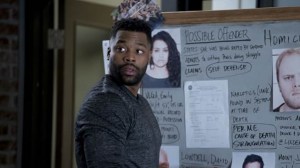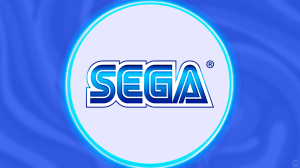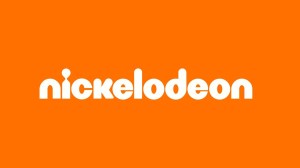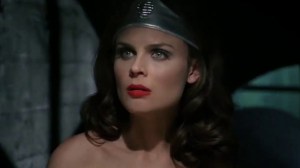Cover-dated November 1961, Stan Lee and Jack Kirby’s The Fantastic Four hit newsstands 55 years ago and comic book superheroes were changed forever.
Videos by ComicBook.com
Today, we see a landscape where no comic currently being published bears the title Fantastic Four, two of the team’s members (Reed “Mister Fantastic” Richards and Susan “Invisible Woman” Richards) are absent from the Marvel Universe, Johnny “The Human Torch” Storm is palling around with the Inhumans, and Ben Grimm is just about shuffled off the Guardians of the Galaxy.

It seems it’s up to the “Keepers of the Faith” outside of Marvel to celebrate this milestone. As such, starting this past November will have seen fans, professionals, and commentators reflect on Marvel’s First Family.
So join us, O Frantic One, as we continue our series and speak to…
Joe Sinnott, longtime inker of the Fantastic Four and artist extraordinaire. Mr. Sinnott first contributed inks to the Fantastic Four series with 1962’s issue number five, the introduction of one of comicdom’s greatest villains in the form of Dr. Victor Von Doom.He would later join the book as the regular inker with issue 44 in 1965, jumping back in as the Inhumans were just being properly introduced into the Marvel Universe.An integral part of FF history, Sinnott would remain on the book long after both Stan Lee and Jack Kirby had departed, providing full issue inks or cover inks for most of the issues until 1981.He even made a brief return to the series in the late 1980s.
In addition to inking the inimitable Kirby, Sinnott would ink such other artists on Fantastic Four as Rich Buckler, John Romita, George Pérez, John Buscema, Bill Sienkiewicz, and even a bit of John Byrne.It is in large part due to Sinnott’s dedication to the series that it maintained a degree of visual cohesion even as the title was passed from artist to artist with his own touches giving it a sense of continuity post-Kirby.Sinnott holds the notable distinction of being one of the few comic professionals to have contributed to more issues of the FF than its originators Lee and Kirby.
Having just this past October celebrated his 90th birthday, Mr. Sinnott remains a creative force to be reckoned with as occasional sketches surface from time to time suggesting the skill and precision of a man a fraction of his age.His inks over Jim Lee pencils of Superman last year for the Inkwell Awards, in particular, pointing to a hand that has lost none of its steadiness and an eye for detail that remains virtually unmatched.
Mr. Sinnott is in short a living legend, particular for fans of Marvel’s First Family.

Mr. Sinnott, you are a legend in the history of the Fantastic Four.After Stan Lee and Jack Kirby, yours is the first name to come to mind when discussing the FF’s development, Jack’s art flourishing under your inks to become to the greatness we associate with Kirby and Fantastic Four.In terms of creative input, you may have touched more issues of the series than any other individual, only one or two even entering contention, sticking with the series long after both Lee and Kirby had moved on to other endeavors.How would you describe the FF’s place in your career and artistic output?
It obviously is the work I am most identified with.
While you were on Fantastic Four did you have a sense that you were working on something that would have the kind of history and legacy that it has developed and maintained?
No, none of the characters or books at first impressed us as potential classics.It was just another assignment.
What was it about the Fantastic Four series that inspired such professional devotion as an artist from you that kept you inking over a number of artists, including Jack Kirby, John Romita, John Buscema, Rich Buckler, and George Perez?
Here again, it was just a job, but Stan Lee liked the way it looked no matter who I was working over, so that’s the reason I had my work published, either complete stories or covers, in over 200 issues.
Of all the pencillers you inked on Fantastic Four, whose artwork did you enjoy working with the most?
Kirby was the easiest to ink, and he certainly gave the FF their look; however, John Buscema did some nice stuff that I really enjoyed working on.
Having seen some of your more recent inking work, in particular, your inks over Jim Lee’s pencil’s on a piece of art depicting DC Comics‘ Superman produced for last year’s Annual Joe Sinnott Inking Challenge, I’m still amazed by your abilities.Your lines are astonishingly clean and you significantly elevate Lee’s work.To what do you attribute your creative longevity?
I have always tried to improve anyone’s work no matter who and I’ve always been extremely conscientious in all my work.
What do you think has been your most lasting contribution to the comic book industry and art form?
I don’t think I ever turned in an inferior job. I have always made it a point to do my best no matter who I was working with.
This November is the 55th Anniversary of the Fantastic Four’s first appearance by cover date. This is also the first fairly notable anniversary we’ve seen where they aren’t being featured in a Marvel Comic in any way, shape, or form. What reflections does that inspire in you?
[It seems to have happened] for many reasons that you or I cannot comprehend.
What are your fondest memories of work on Fantastic Four?
Being a part of some of the creation of such notable characters as Dr. Doom, the Silver Surfer, Galactus, the Mole Man, the Inhumans, Black Panther, etc.
I’ve read that for all the work you did over Jack Kirby’s pencils you only met him a handful of times.Do you feel that working so closely to interpret and embellish another artist’s work gives you some insight into the man and his process, despite or perhaps because of that lack of more personal contact?If so, what unique insight do you think you might have into Kirby and his process?
Certainly Kirby was great without me but I do feel that I added just that little extra that put him in a class by himself.
It’s often said that the Fantastic Four, when they debuted, were revolutionary in the comics world — that they were different than anything on the stands. Generally, it’s specifically cited that they were dramatically different from DC’s output at the time. With the FF, Stan Lee and Jack Kirby are generally credited with beginning the elevation of the medium and introducing more complex characters/stories. Do you think this is their most important legacy? Do you think it’s entirely deserved?
Yes and yes.
Looking ahead, what would be your greatest hope for the FF property in the future?
That they would make a great movie that would truly be worthy of their uniqueness and success.








